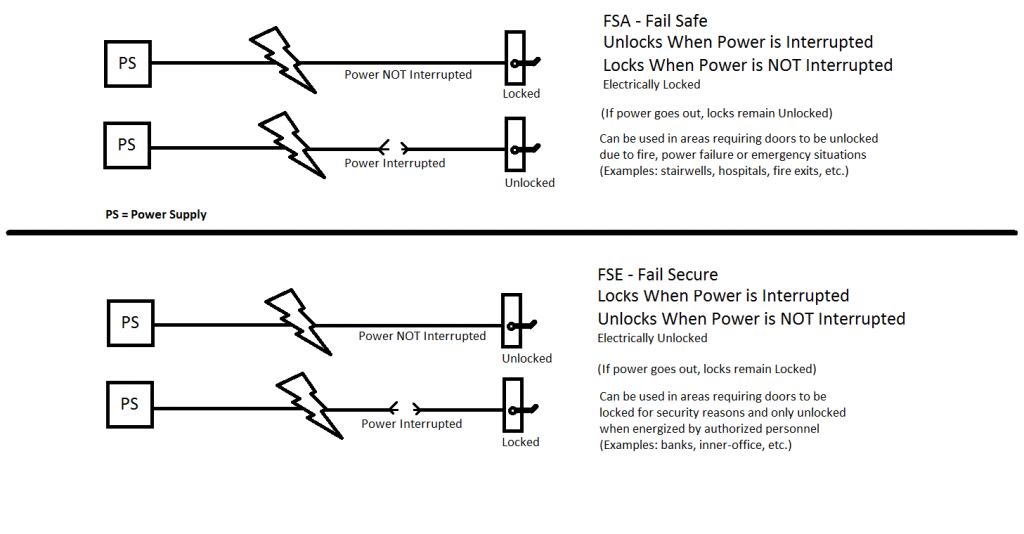
Electric strikes are an important part of a security system, as they provide a secure and controlled entry point for individuals who are authorised to access a building or area and are typically used in conjunction with an electronic access control system. While they both serve the same basic function, not all electric strikes are created equal, and there are two main types: fail safe and fail secure.
As locksmiths, understanding the difference between fail-safe and fail-secure electric strikes is crucial for recommending the right solution to your customers based on their specific needs and security requirements.
By offering your expert guidance and installing the appropriate electric strike, you can make sure that your customers will have solutions that achieve the appropriate balance between safety and security. Let’s see what the main difference is between these two types of locks:

Fail-Safe Locks
Fail-safe locks open when power is lost so they are the go-to choice for situations where your project requires prioritising quick and safe exit in emergencies. In an emergency, power is cut and doors can swing freely, allowing people inside to leave the building safely.
Imagine you're working on securing a commercial building with a controlled access system. In this scenario, you would typically recommend a fail-safe electric strike for the main entrance. Here's why:

Fail-Secure Locks
Fail-secure electric strikes should be your preferred choice for high-security applications where maintaining a locked state is paramount, such as server rooms or areas with valuable assets. In case of a power outage, fail-secure locks will automatically lock keeping assets safe from intruders.
Let's say you're working on securing a confidential server room within a company's office space. In this case, you would likely recommend a fail-secure electric strike:
....................................................................................................................
Electric Strikes
Electric strikes replace the regular strike and come in both fail-safe and fail-secure models, with either regular or panic hardware. The spring-loaded keeper on the electric strike controls the latch bolt of the lock or panic hardware. When access is allowed, the keeper is freed and the latch bolt can be pulled through the keeper in order to open the door.
Electro-Magnetic Locks
An electromagnetic lock is electrified and controlled by a card reader, remote release, or other access control device. A fail-secure lockset is locked on the secure side when there is no power to the lock. When power is applied due to someone tapping a card on a reader or entering a keypad code, the magnet is powered off and the door is unlocked.
Your knowledge of the differences between fail-safe and fail-secure electric strikes allows you to provide the best solutions to your customers. Whether enhancing security or ensuring emergency exit, the choice between fail-safe and fail-secure strikes plays a vital role in creating effective access control systems for them.
....................................................................................................................